Fashion designer and artist shows how climate change inspires her creations, hoping others will become more eco-friendly and follow suit, Cheng Yuezhu reports.
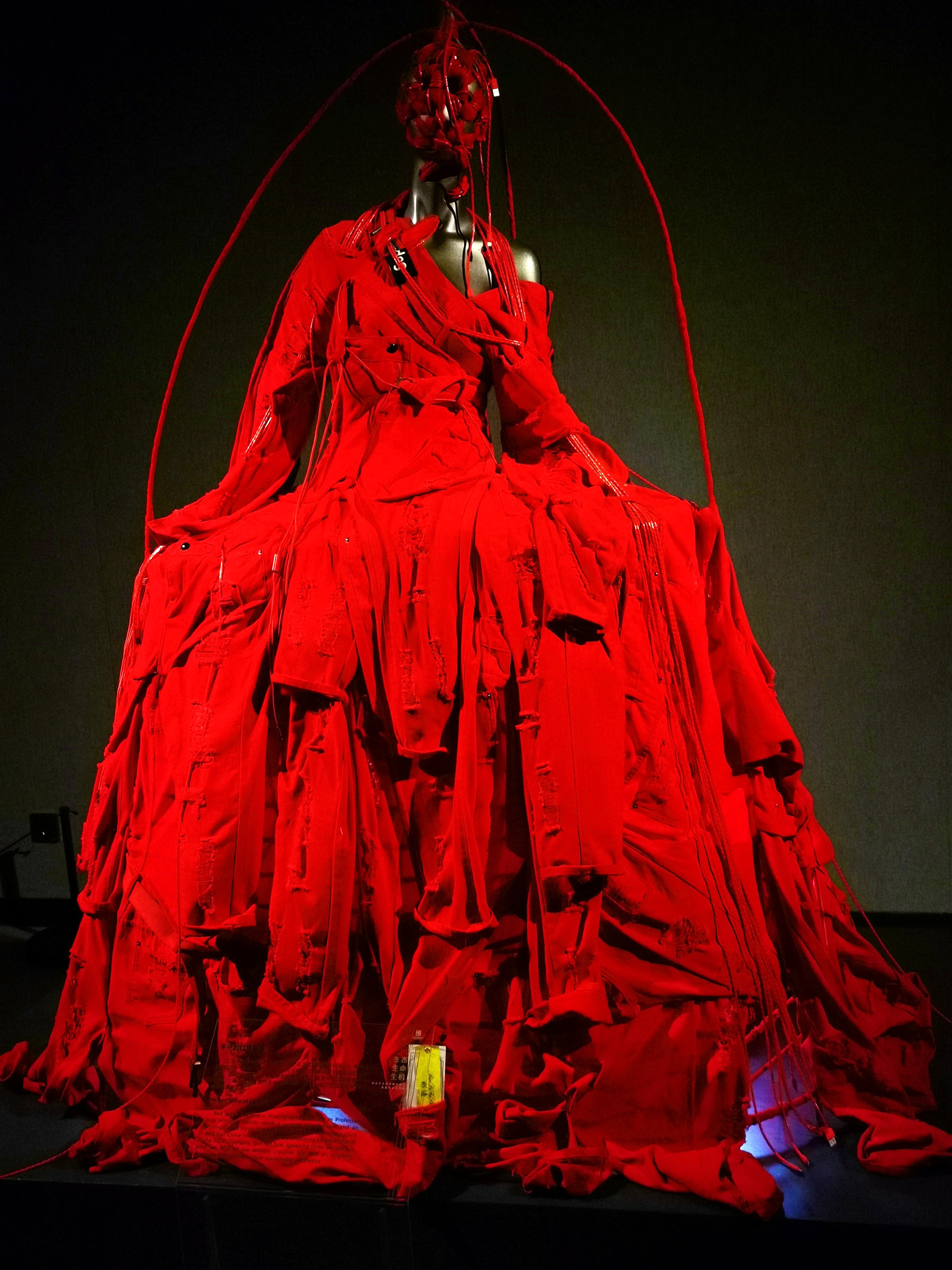
At designer-artist Liang Mingyu's solo exhibition at Liuzhou Industrial Museum in the Guangxi Zhuang autonomous region, a 10-meter-long installation commands the hall, its striking red covering the entire space in a bloody hue.
Titled Ocean, the installation comprises a gigantic whale shark and its young, both constructed with steel frames and red denim, and draped in many plastic ropes, data cables and textiles. Above them is a hollow sphere made of red plastic trash bags, threatening to enmesh the creatures.
"The bloody red seems to have been drawn directly from the body. The artist drags it and compresses it over and over without any mercy, until it becomes pieces of wrinkled skin," Zou You, vice-president of the China Fashion Association, writes after viewing the piece.
READ MORE: From waste to wearable fashion
"Standing before it, I suddenly felt my inner self turned outward. The shame, tremors, and unhealed scars usually hidden beneath the skin are now all laid bare."
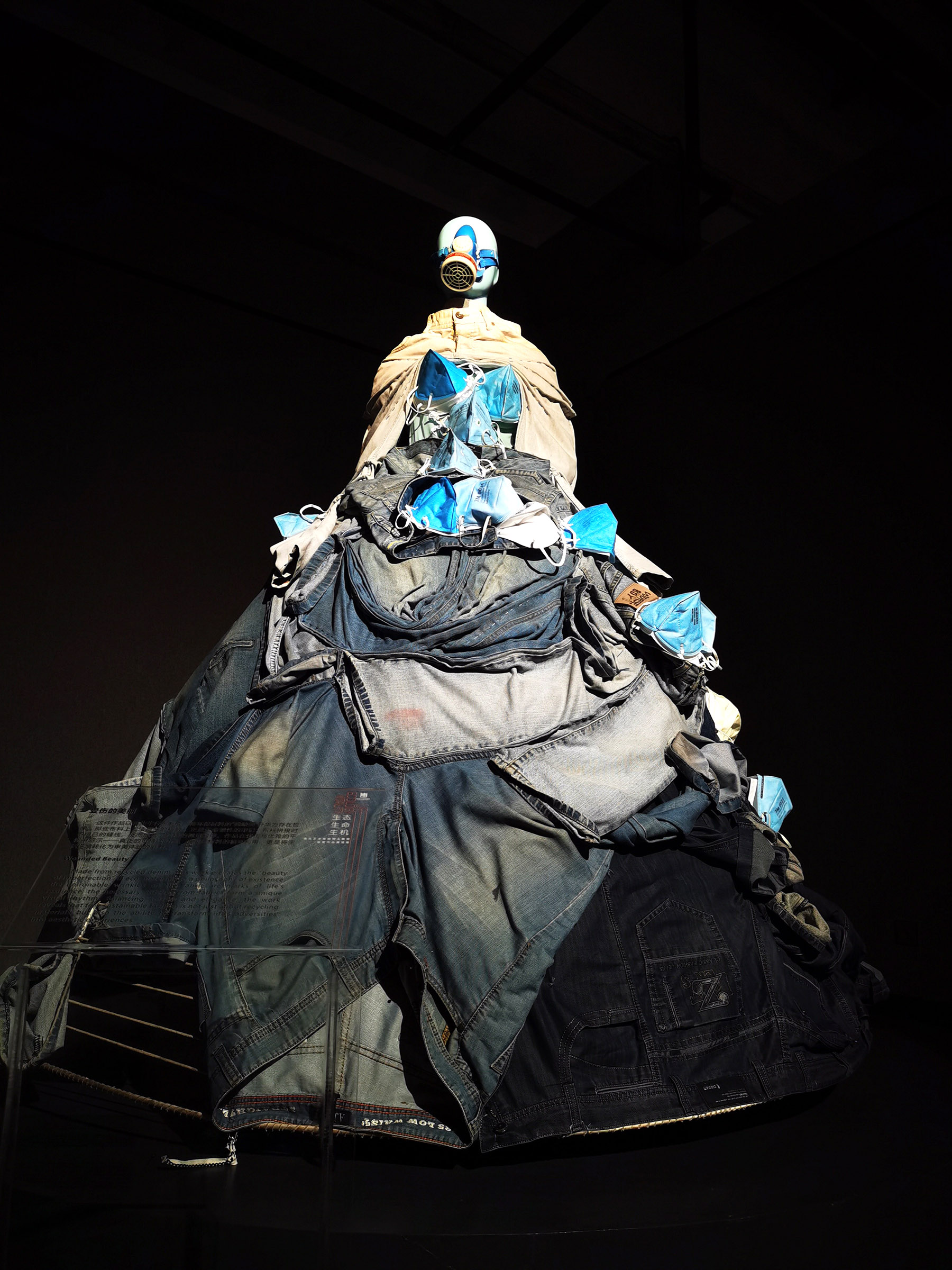
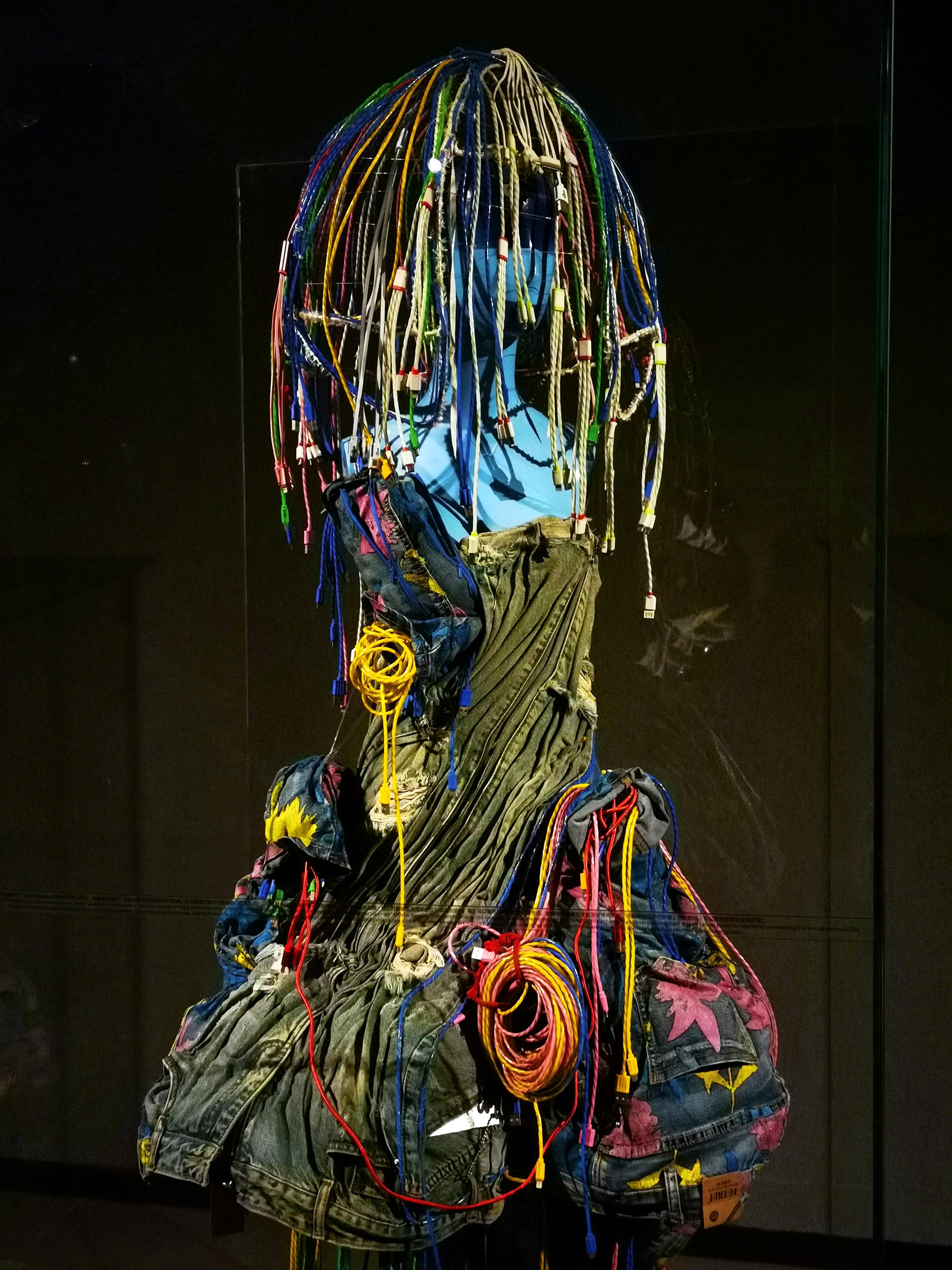
The exhibition, Life Ecology Vitality, runs from July 25 to Oct 25, and showcases the large-scale installation works of Liang Mingyu, a fashion designer, contemporary artist and professor at Southwest University in Chongqing.
For years, Liang has used her art to address ecological and environmental issues. Her representative installation piece, Maasai Mara, aims to raise awareness about elephants and has been exhibited in international venues, such as the Tate Modern in London.
Ocean is the first piece in an eco-preservation trilogy Liang has been conceptualizing since completing Maasai Mara in 2018, along with the unfinished Earth and Sky.
"This piece is about ocean pollution caused by human consumption. Even in the depths of the Mariana Trench, plastic particles can be found. The tragic conditions of marine creatures are worrying," Liang says.
The creative process spanned from 2021 to 2025, during which she combined her techniques in garment making — designing, shaping and sewing — with her thoughts and feelings.
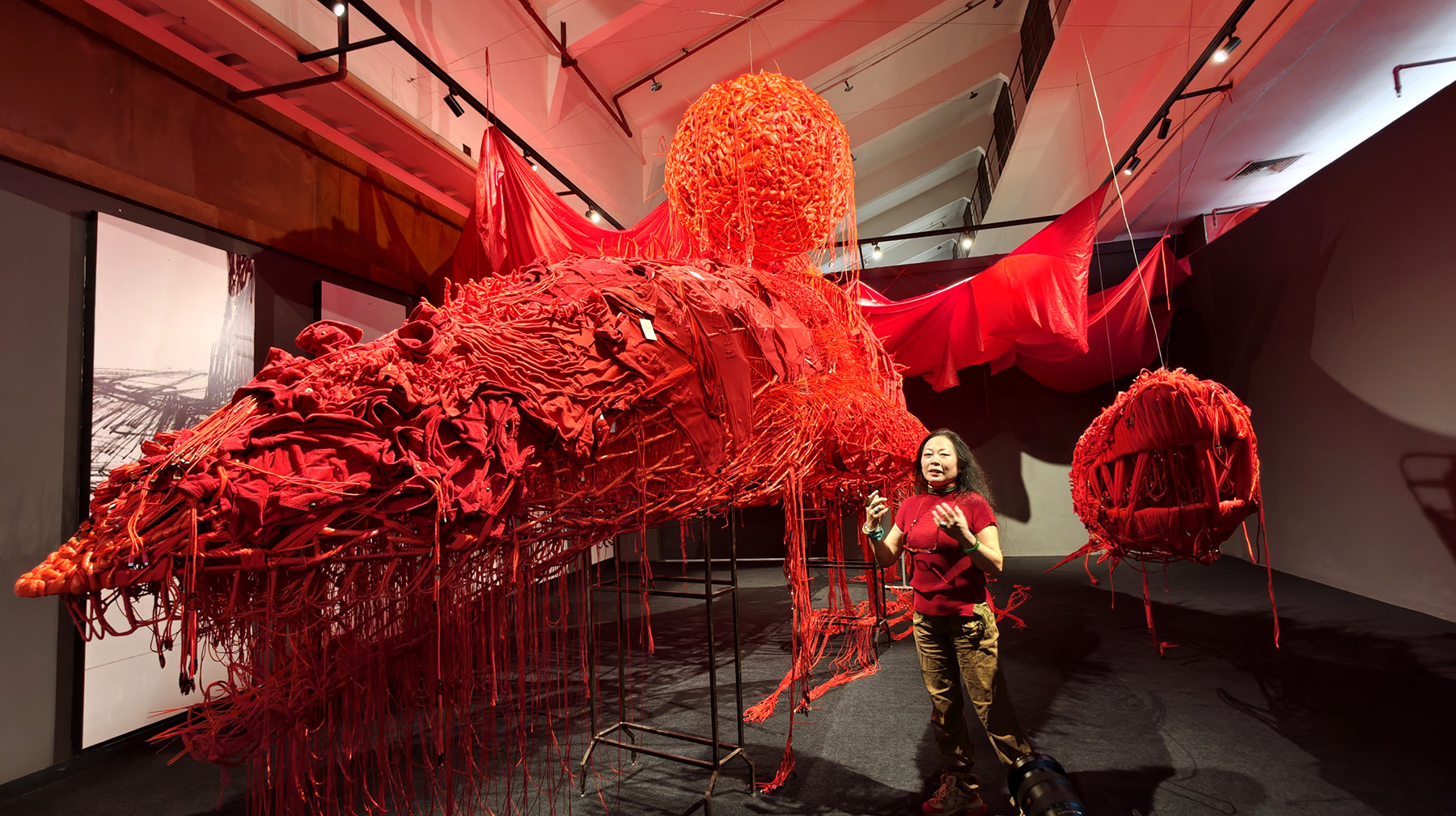
By using a striking red hue and several dozen kilograms of cables, the piece is her call for redemption and salvation, and it serves as a warning.
"When I created it, I communicated with the whale sharks through my heart. It was like my flesh and soul became tangled with the layered materials when I was sewing them," Liang says.
"Some viewers told me that they feel swallowed by its visual intensity. This is what I wanted to express. Not only does the audience empathize with the piece, but our lives are essentially one."
Liang was born in 1956 and started working in fashion design in 1986. To her, fashion is a fundamental everyday need, and similar to any other art form, fashion can portray grand concepts and thoughts.
"My two identities are paradoxical. As a designer, I am supposed to create fashion, known for its polished appearance. After working for several decades, my commercial garment designs were indeed well liked by consumers. But as an artist, my eyes see the filth and desperation behind fashion — that is, pollution, overstocking and carbon emissions," she says.

Feeling that the industry operates against her morals, she let go of her fashion brand many years ago. By her example, she hopes younger designers will use recyclable materials, minimize stocks, and boycott animal fur, and hopes they adhere to eco-friendly principles and innovative materials.
In recent years, she has mainly worked in her Chongqing studio but keeps a close eye on environmental disasters. She even created a landscape piece inspired by her distress about wildfires in Chongqing and Australia.
"Even in my studio, I see changes in the urban environment. Adverse weather causes my plants to wither; it doesn't matter if I water them. I don't travel because I want to avoid the summer heat. I want to use my body to experience and endure the ill effects of climate change," she says.
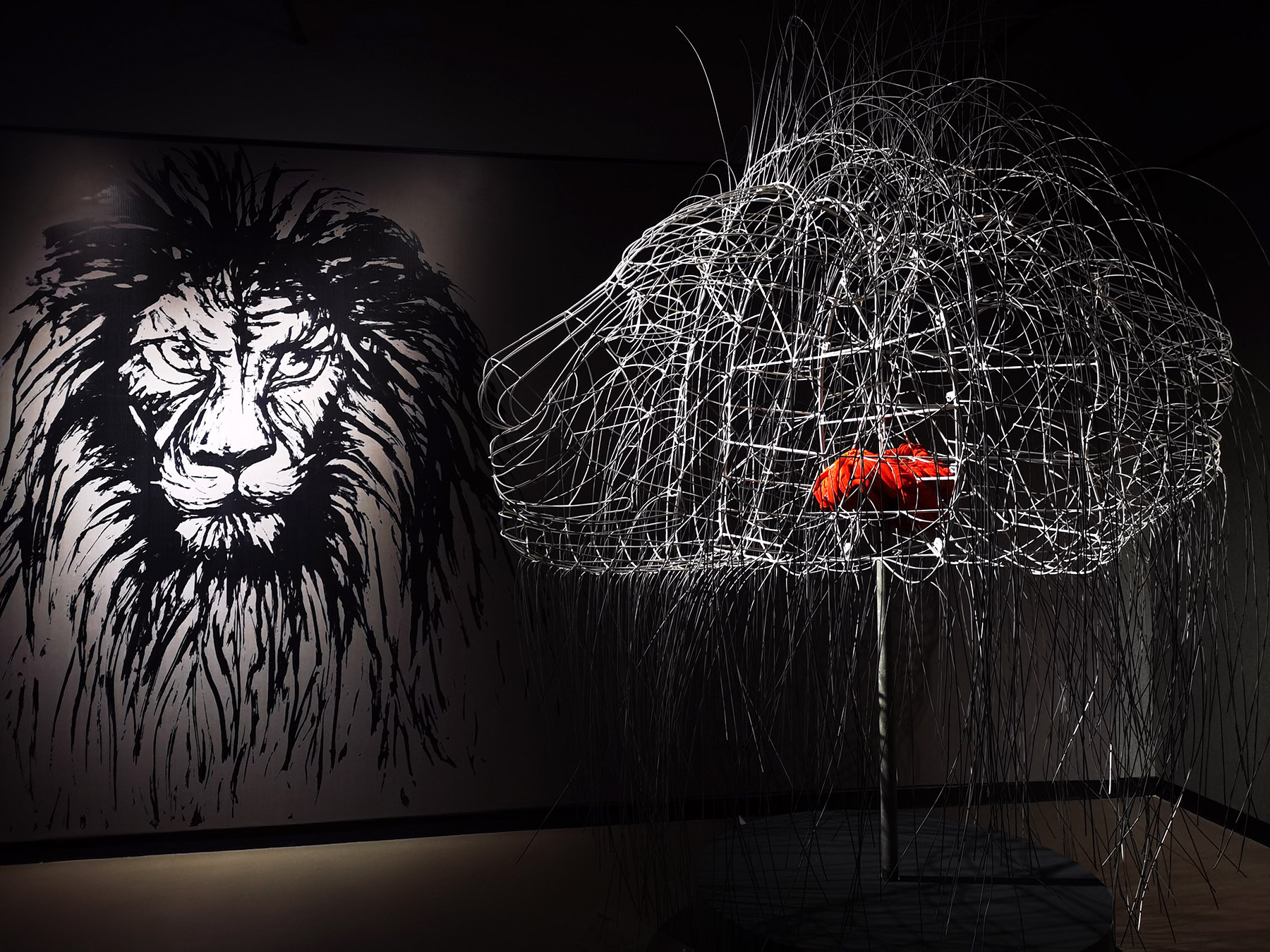
In addition to working on her art, she also gives lectures at universities, libraries and public welfare organizations. Students studying international environmental preservation from the University of Technology Sydney in Australia also visited her studio on a research trip.
Another of her major projects in recent years was a systematic study about Chongqing's Dazu Rock Carvings, a UNESCO World Heritage site. She drew a series of sketches of the sculptures, catalogued their colors onto a palette for future reference, and designed merchandise to promote the heritage.
ALSO READ: From 'battle robe' to fashion icon
"Professor Liang Mingyu, a celebrated artist and leading figure in fashion design, has remained steadfast in her pursuit of artistic excellence and her commitment to social responsibility," says Jiao Xingtao, president of the Sichuan Fine Arts Institute in Chongqing.
"She has distinguished herself with remarkable achievements in both the fashion industry and the realm of artistic creation," Jiao says.
Contact the writer at chengyuezhu@chinadaily.com.cn


